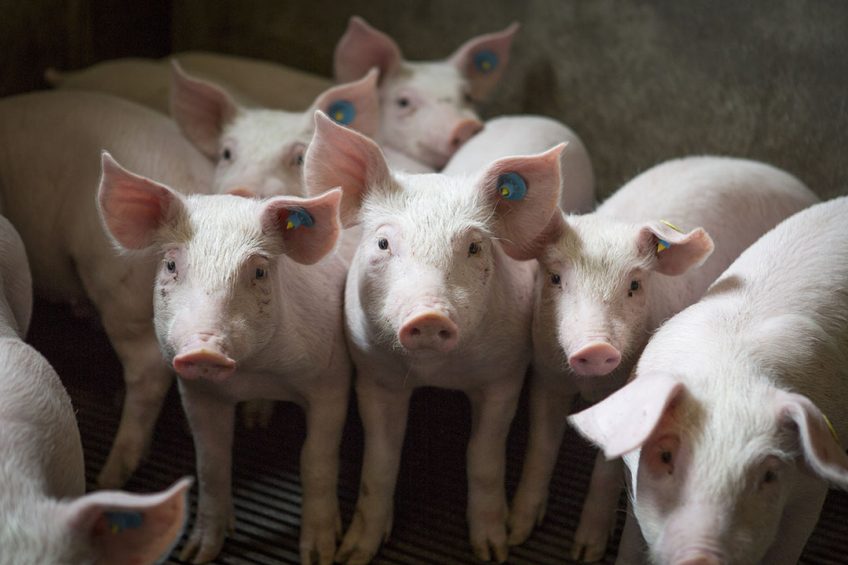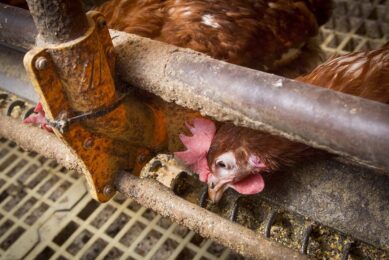Closing the door on ASF with feed biosecurity

Over the past decades, the global swine industry has been challenged by several viral pathogens each with devastating economic impact. Increasing biosecurity standards can prevent viruses from entering a farm. Feed biosecurity is part of this biosecurity chain.
Porcine Epidemic Diarrhoea (PED), belonging to the Coronaviridae family, was first reported in 1970 in the UK and thereafter in several countries across the globe. Since 2011, increased outbreaks have been described with very high mortality and morbidity, mainly in young piglets. In the mid-1980s, Porcine Reproductive and Respiratory Syndrome (PRRS), part of the family Arteriviridae, was first recognised in the USA and spread rapidly worldwide. More recent, as since 2016, worldwide swine industry has been jeopardised by African Swine Fever (ASF), a DNA virus in the Asfarviridae family. Because of its very complex epidemiology, it is currently the highest threat to pork production. At this time, it is present in both wild and domestic pigs in Europe, Africa and Asia and has led to a global reduction of the pig population by at least 25%.
Feed ingredients and viral transmission
Since the outbreak of PED in North-America in 2013, contaminated feed ingredients and animal feed were assumed to be a potential vehicle in viral entrance and transmission between farms and between countries. In one study it was demonstrated that several viral pathogens (amongst which PRRS, PED and ASF) can survive in various feed ingredients and in animal feed. In another study it was shown that plant-based feed materials promote ASF virus stability and survival. As feed delivery is a recurrent event and there is a high risk of viral mitigation via the feed, conclusion can be made that a considerable amount of pig farms can be infected via this route. Furthermore, it was demonstrated that ASF can be transmitted orally via contaminated feed and cause infection.
Closing the biosecurity gap
As there is an important need for improved global biosecurity via the feed, Agrimprove have recently developed FeedLock. The product is a patented mixture of medium chain fatty acids (MCFA) with proven effect on viral transmission via the feed. Independent research facilities in the US and Vietnam have proven the effects as well in vitro as with in vivo bio assay. The product is able to neutralise viruses in infected feed and this way safeguard the animal from being infected through this pathway. In that respect, a study was performed at the National Institute of Veterinary Research in Vietnam to test the efficacy of FeedLock towards ASF.
The MCFA containing product was added to complete feed spiked with ASF-virus. After a 24hr incubation period, DNA was extracted and real-time PCR was performed. All tested concentrations showed a statistical increase in Cycle quantification (Cq) value compared to the positive control (P<0.05). results, expressed as delta cq value, can be found in>Figure 1. </0.05).>
Figure 1 – Dose effect of a mixture of MCFA* on real-time PCR cycle time.

The current hypothesised mode of action of the direct anti-viral effect of MCFA is creating viral instability by making pores into the viral envelope. Thomar et al. (1987) previously demonstrated this phenomenon by electro-microscopy. This anti-viral effect of MCFA was proven in a study performed at the University of Ghent in which it was confirmed that MCFA avoid invasion of Porcine Alveolar Macrophages by PRRS.
Figure 2 – Linear significance of the effect of a mixture of MCFA* on average daily gain (ADG) in piglets, from day 0-35 post-weaning.

MCFA improves performance
Administering the product in the diets will not only provide a higher biosecurity on farm but for decades it is known that MCFA mixtures beneficially influence performances of as well sows, piglets as finisher pigs. Agrimprove are known for blending specific Free Fatty Acid combinations for specific challenges. This MCFA mixture is in this respect no exception. A very recent study at K-state, showed that increased ADG, ADFI, FCR were observed with increasing the FeedLock levels (up to 2.0%) in the diets (Figures 2, 3 & 4)
Figure 3 – Linear significance of a mixture of MCFA* on average daily feed intake (ADFI) in piglets, between day 0 and 35 post-weaning.

Figure 4 – Linear significance of a mixture of MCFA* on the feed conversion ratio (FCR) in piglets, between days 0-35 post-weaning.

Combining the best of both worlds
Increasing the biosecurity standards on farm is all that can be done to prevent viruses from entering. Feed biosecurity is part of this biosecurity chain. Adding additives that are carcinogenic, bind proteins and can lead in the long term to stomach ulceration, may not be the preferred solution. With Feedlock, mixture of natural components, it is possible to combine the best of both worlds: safeguard animal feed from spreading virus and improve your animal performance at the same time. That is what we call farming ideas.
Authors: Maartje De Vos (Product Developer Pigs) and Kobe Lannoo (Category Manager Agrimprove Pigs and Cattle)
Find out more on
Agrimprove
References are available on request
 Beheer
Beheer






 WP Admin
WP Admin  Bewerk bericht
Bewerk bericht